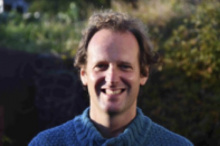Mutations, transposable elements and the evolution of recombination

Denis Roze
One of the most widely cited hypothesis to explain the evolutionary maintenance of genetic recombination states that the reshuffling of genotypes at meiosis increases the efficiency of natural selection by reducing interference among selected loci. However, most models on the evolution of recombination consider only a few selected loci, and the possible strength of indirect selection for recombination under more realistic settings remains difficult to quantify. Using models in which mutations occur along a whole genome, I will show that the strength of selection for recombination can often be approximated by a simple expression of NeU and NeR (where Ne is the effective population size, and U, R the deleterious mutation rate per chromosome and chromosome map length), and is not affected much by details of the genetic architecture of fitness (selection and dominance coefficients of mutations, epistasis). I will then consider how transposable elements (which often represent an important proportion of eukaryotic genomes) affect selection for recombination, and show that the transposition process leads to different selective pressures on recombination than in classical models of deleterious mutations.
CNRS, Station Biologique de Roscoff, France
Recent publications:
1 Abu Awad D & Roze D 2020. Epistasis, inbreeding depression and the evolution of self-fertilization. Evolution 74:1301-1320.
2 Vanhoenacker E, Sandell L & Roze D 2018. Stabilizing selection, mutational bias and the evolution of sex. Evolution 72:1740-1758.
3 Roze D 2016 Background selection in partially selfing populations. Genetics 203:937-957.


